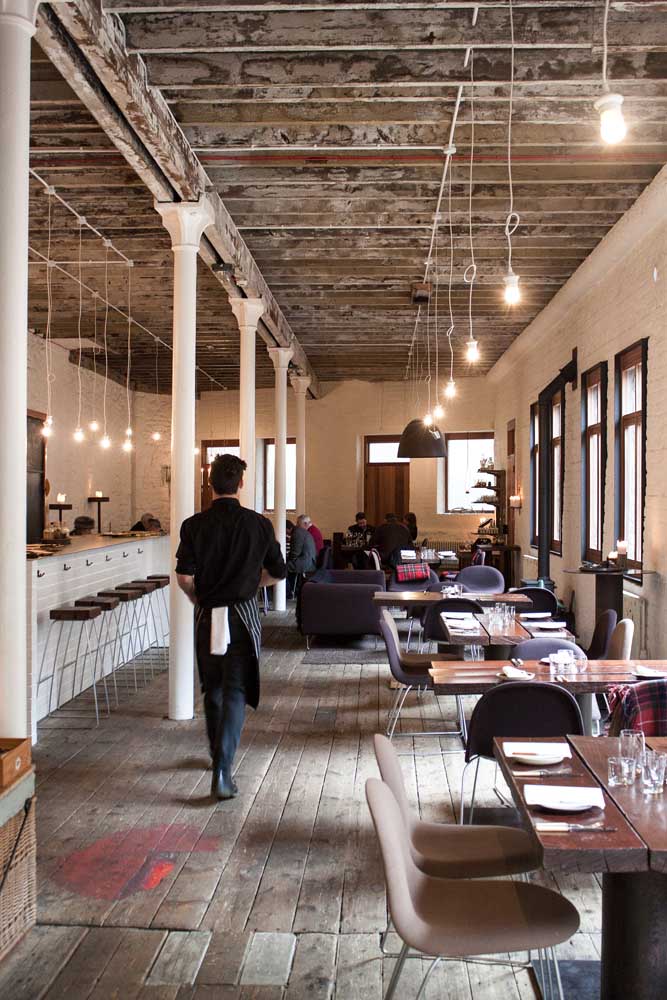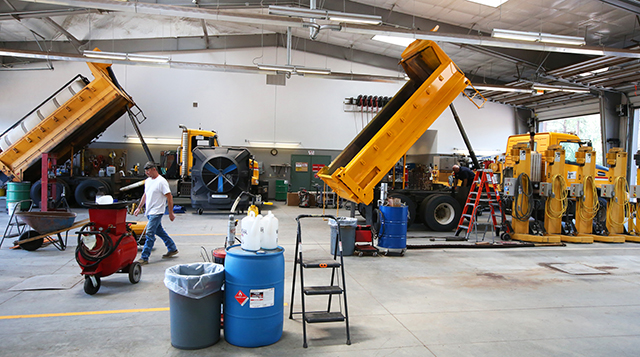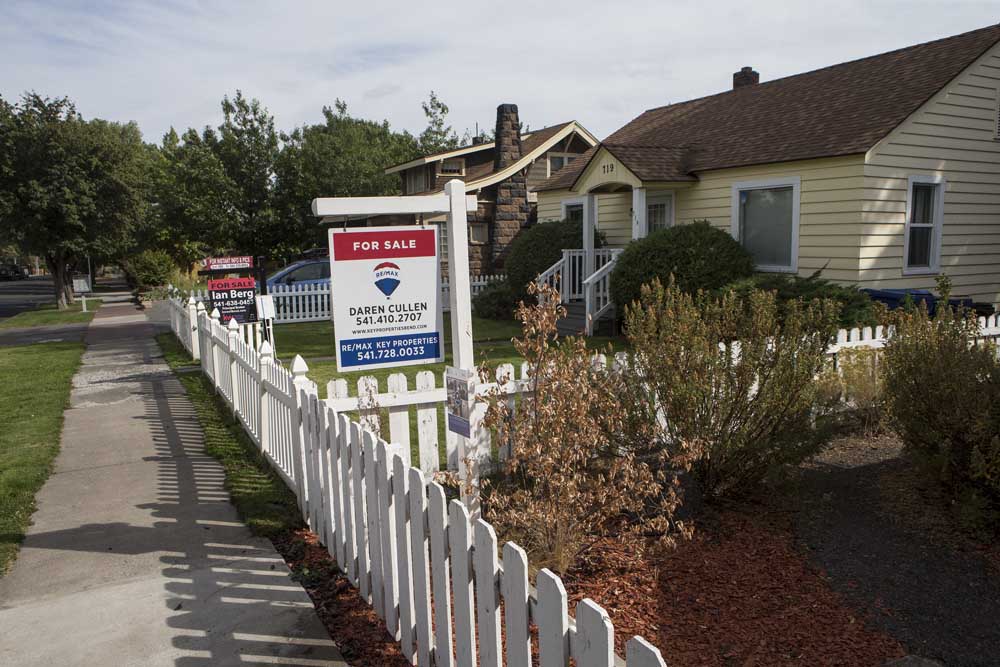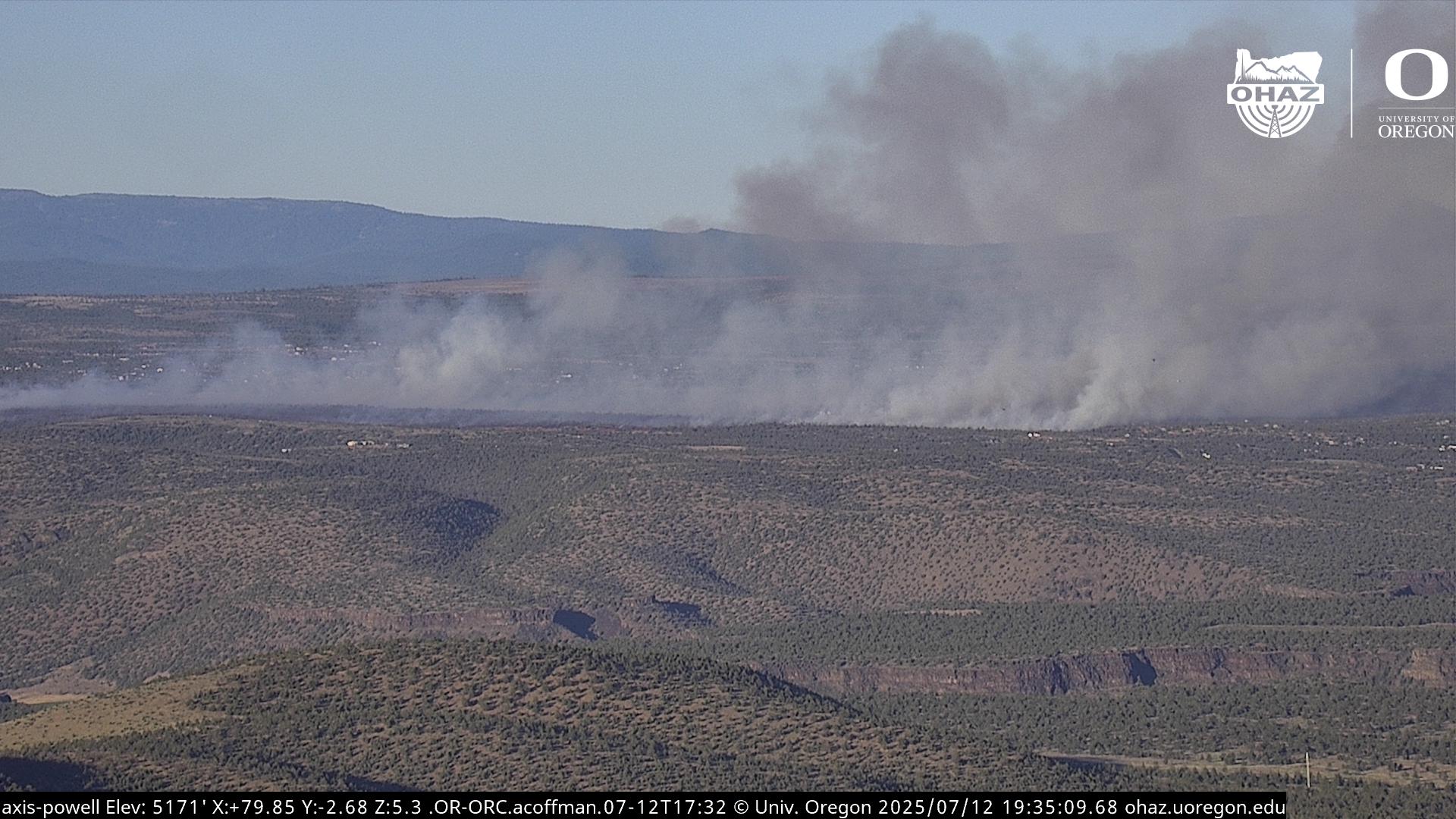On the trail of Vikings in Scotland
Published 12:00 am Sunday, September 20, 2015

- Abi Radford via The New York Times
“Sving til venstre.” Jurgen issued instructions in his pleasingly Nordic voice, firm but encouraging. From behind the wheel, David nodded his head and turned the car to the left. We were only a mile outside Edinburgh, but thanks to David, my Norwegian-American boyfriend, and Jurgen, the Norwegian speaker on David’s GPS, I already felt deep into Viking territory.
Scotland is perhaps not the most obvious place to look for traces of Nordic culture. But in the months leading up to the nation’s vote on independence from England last September, there was talk of it everywhere. Although it had been six centuries since any part of Scotland was in Norse hands, many nationalists were suggesting that Viking heritage formed part of the separate identity that lay behind an independence bid, which, although it failed at the polls, has grown stronger since the referendum.
Trending
As a recent transplant to Denmark, I was still trying to figure out Scandinavian identity myself. What did it take, besides a penchant for bicycles, brooding television series and salted licorice, to become Nordic? To find out, David and I would start in the capital, then drive as far into Scotland’s formerly Viking lands as we could.
We began at the National Museum of Scotland in Edinburgh. The first Viking invasions into the British Isles were recorded in the late eighth century; monks’ chronicles make frequent, terrified references to northerly marauders who raped and pillaged their way through the Highlands. But at the museum, the image of those rampaging Norsemen was changing: Not only were they not all raiding, bloodthirsty warriors, but they also weren’t even all men. Tools, jewelry and a reconstructed burial site on display all testified to the gentler side of Viking life and proved that the Norse (male and female) set down roots in Scotland, engaging in agriculture, trade and family life.
“Relations with local people,” read the optimistic text on one case, “weren’t always hostile.”
On that day last August, they were rather the opposite. Near a barbershop full of men whose lumberjack beards marked them as either Scandinavian or Brooklynite, we found Timberyard. With its rough wooden floors and jars of fermenting vegetables on display, the restaurant would have fit as easily onto a lonely, windswept expanse of the Stockholm peninsula as it did in the Scottish capital.
The food, too, was identifiably Nordic, from the chewy sourdough served with house-made butter and lovage salt that started the meal, to the foraged woodruff tea that ended it. In between came delicate dishes strewn with local herbs and flowers: nearly raw scallops shaved thin and adorned with wild garlic petals; mackerel grilled so that the char cut through the fish’s oiliness, served with yogurt and juicy nasturtium leaves.
“It’s hard not to be influenced by it,” Ben Radford, the chef, said of the northerly elements in what he calls his “modern Scottish” cuisine. “Culturally, we’re very similar. And we’re working with the same ingredients, letting them shine through, so that each flavor is apparent, crisp and clean.”
Trending
In Glasgow, two recent graduates take the affinity even further. Through their consulting firm, Lateral North, Graham Hogg and Alex Hobday help towns in the upper reaches of Scotland develop their Nordic potential as transportation and green energy hubs.
“We have the same climate, the same landscape, even the same dark sense of humor, so we can take the Nordic countries as a model for economic development,” Hogg said. “We’re trying to get people to think of Scotland not as the end of Europe but as the gateway to the North.”
Looking north
It was time to head toward that gate. There are a number of Viking-related spots in the Western Highlands. But Hogg had said we would find the most striking examples of Scandinavian-style Scotland in Orkney and Shetland, so we fired up the GPS and headed north.
“Rett frem,” Jurgen said, directing us straight ahead with what I interpreted as approval.
Several hours later, Norway appeared on the horizon. In truth, it wasn’t really Norway, just a series of Nordic-style houses — pointy, clean-lined and painted in bright, saturated colors that stood out against the churning North Sea — that wouldn’t have been out of place in Bergen. We had reached John O’Groats, the purportedly northernmost (there is some contention) point of mainland Scotland. It consists of little more than a few souvenir shops and a parking lot big enough for all those tour buses to turn around in.
But Natural Retreats, a hotel development company, has made the place much more appealing by taking a Gothic-style inn and adding several Nordic-style wooden houses onto the side.
But neither Scandi chic, nor the newer, kinder version of the Vikings had made it to the nearby town of Wick, which gets its name from the Old Norse word for bay. Asked why the hotel where she worked was called the Norseman, the receptionist admitted that she wasn’t sure.
“Because they came here raping and rampaging through the hills?” she asked. “You know, doing Viking things.”
It wasn’t hard to see why she persisted in that image. Wick, which Robert Louis Stevenson once referred to as “the meanest of mean towns,” has little in the way of tourist attractions except for a ruined castle that was probably built in the 12th century, presumably by a Norse earl, Harald Maddadson. One of the oldest and best preserved in Scotland, the castle’s tower still reaches four stories up, and its defensive ditches and perilous cliffs keep it cut off from the mainland. It is a stirring place, desolate and imposing, and not at all hard to imagine as the kind of stronghold from which one might have set out marauding.
Just marketing?
Did people in this part of Scotland feel Viking? As we stood on the ferry to the Orkney Islands, watching mainland Britain disappear, we pondered the question.
“What I can’t tell,” David said, “is whether they actually identify with their Nordic past or if it’s just a marketing ploy.”
We had our first answer of a sort after landing at St. Margaret’s Hope, a pretty, stone-clad town that was a welcoming entry to Orkney’s main island. Rebooting Jurgen after his stay in the ship’s hold, we drove to Highland Park distillery in the market town of Kirkwall, the Orcadian capital. The northernmost whisky distillery in Britain (there would be many claims to the northernmost on this trip), Highland Park makes a line of high-end Scotch whiskies named after Vikings real and imagined: Eibar, Thor, Loki.
“We’re steeped in Viking history, with all its fantastic stories, and if you have a story you can sell more,” said Patricia Retson, Highland Park’s brand heritage manager, after we had toured the distillery’s dankly atmospheric cellar and sleek tasting room. “But we’re also trying to make a real connection, and if it’s going to work, it has to be authentic.”
To that end, the distillery’s Loki gets its mischievousness from an aroma that is all sweet apples but turns to smoke and wood on the palate. Its Leif Eriksson is aged in 100 percent U.S. oak barrels.
A living legacy
Yet in downtown Kirkwall, where the Romanesque cathedral, built of sandstone, houses the relics of St. Magnus Erlendsson, the Norse-descended Earl of Orkney who was martyred after an unsuccessful battle with a rival chieftain in the early 12th century, and where miniature Viking ships still cap the post office lintel, Donna Heddle had no doubt the connection went considerably deeper than mere marketing.
As the director of the Center for Nordic Studies, Heddle sees evidence of Norseness almost everywhere: in the Orkney dialect that puts its prepositions at the end of sentences; in a concept of social justice that emphasizes egalitarianism and spurns status or rank; in the fact, she said, that 66 percent of Orcadians’ DNA is Norwegian. And just as the Nordic presence helps explain the separate sense of identity that Scots feel from the English, so too does it explain the separate identity that Orcadians feel from mainland Scots.
“Vikings are very sexy now,” she said. “But for us it’s more than that. You can see it in our knitting patterns and our sailing skills and in the can-do attitude. This is a living legacy.”
Living, but also dead. After Kirkwall, we drove across windswept hills and muddy farmlands, before arriving at Orphir and the archaeological remains of Earl’s Bu. According to the medieval Orkneyinga saga, the nearly 1,000-year-old site was home not only to a round church built by Magnus’ murderous cousin Hakon but also to a grand drinking hall, or bu. Like most Viking drinking halls, it was the scene of quite a lot of violence (proximity to a church came in handy; the brawlers could slip next door to repent of their drunken behavior and, consciences cleansed, get back to guzzling mead). Maybe it was the film in the modest visitor center that recounted how one drunken slight had unleashed a massacre at the hall, or perhaps we had watched too much of “Game of Thrones,” but as David and I walked about the lonely ruins of the stone church (a third of its curved walls still standing), I suddenly found myself charging him with an imaginary battle ax. After a brief but virtual bloody fight, we collapsed on the grass in giggles.
A culinary link
There would be more connections on the Shetland Islands. We landed early in the morning on the main island after an overnight ferry. Waiting for a cafe to open, we prowled the industrial-looking buildings and still-closed sweater shops in Lerwick, the capital and Shetland’s only real town. Once suitably caffeinated, we returned to Jurgen and headed south. Shetland is almost entirely treeless, with a terrain that veers mainly between the barren and the bleak, but is adorably dotted with the tiny ponies that take their name from the place. Rocky soil and near constant wind explain why the local diet is almost entirely lacking in fresh fruit and vegetables. But even that lack can only partly explain the peculiar dish known as reestit mutton.
“No, you wouldn’t expect to find this in a restaurant,” said Marian Armitage, the author of “Shetland Food and Cooking,” as she sawed off a few rocklike chunks of a fossilized slab of meat in her kitchen, where we had come to learn about the local cuisine. “Unless they were trying to do something quirky.”
Through the windows of her enclosed porch, I could just make out the ruined walls of Jarlshof, another Norse settlement, in the distance. Armitage fried a bit of the mutton in a pan and explained the process for making it: Raw meat was salted in brine, then hung from the rafters of the house, preferably over a peat fire, so that the smoke seasoned the meat. I put a bite in my mouth: Quirky was definitely one word for it. The mutton was fatty, salty and tasted, well, rotten.
“Just what you want,” David said, “after a long day at sea.”
Still, I was thrilled to eat it. A couple of years earlier, I had tried something similar in the Faroe Islands, an archipelago in the North Atlantic, about halfway between Norway and Iceland, where they make raest, which is raw mutton hung to air-dry in open huts for months, without the benefit of smoke or salt. Surely, I asked Armitage, raest and reestit were versions of the same dish and evidence of a Nordic connection?
“Ah, no,” she said. “For that you’d be wanting vivda.”
It turns out that Shetlanders once ate the exact same preparation — and called it by the Norse word for leg meat— until salt became more widespread in the islands.
More archaeological sites
After lunch, we turned around (“Snu rundt,” Jurgen said) and headed back north. We passed helpful signs that translated the islands’ Old Norse geographic names into English (“Tingwall, Field of the Parliament”) and stopped, incongruously enough, at a fjord-side food truck for pulled pork sandwiches. It required two more ferries, but we finally arrived in Unst, the northernmost of the Shetland Islands, and hence, the northernmost in Scotland.
Unst has a higher density of rural Viking sites than any place else in the world, including Scandinavia, with 60 longhouses on a 46-square-mile island. For our first stop, at Hamar, we skirted some curious sheep and a watchful bull to walk among the low, grass-carpeted walls of one. From what would have been the front door, I gazed down the length of the shimmering fjord, before I looked down to find the fragments of a broken beer bottle. The idea that local teenagers might use this ancient home as a hangout for drinking, flirting and communing with their Viking past pleased me.
But at the Skidbladner, a reconstructed Viking ship up the road, the volunteer who showed visitors around had a much more prosaic explanation for how past and present came together: economic necessity. Clad in a woolen dress fastened with brooches that approximated what a Viking woman would have worn once she was back on dry land, the volunteer divided her time between welcoming visitors to the site and doing a bit of nalebinding, a Nordic form of needlework that predates knitting. As she showed us around the Skidbladner, a full-size replica of a ship found in a Norwegian Viking burial mound in the 19th century, she told us about the Royal Air Force base that once formed the basis of Unst’s economy.
“But they shut that down some years back, and that left a terrible hole,” she said. “Viking tourism is meant to fill it.”
In the end, neither its Viking past nor its imagined Nordic future would be strong enough to sever Scotland from England. But at our final stop, David and I could see why it came close. After hiking through the heather at Saxa Vord, we arrived at the northernmost cliff on Shetland’s most northerly inhabited island. To the east, some 200 miles in the distance, was Norway; to the north, past the rocky outcrop of Muckle Flugga, was the Arctic. We watched the sun set, then got back in the car.
“Reisen slutt,” Jurgen said. It was, as he said, journey’s end.








